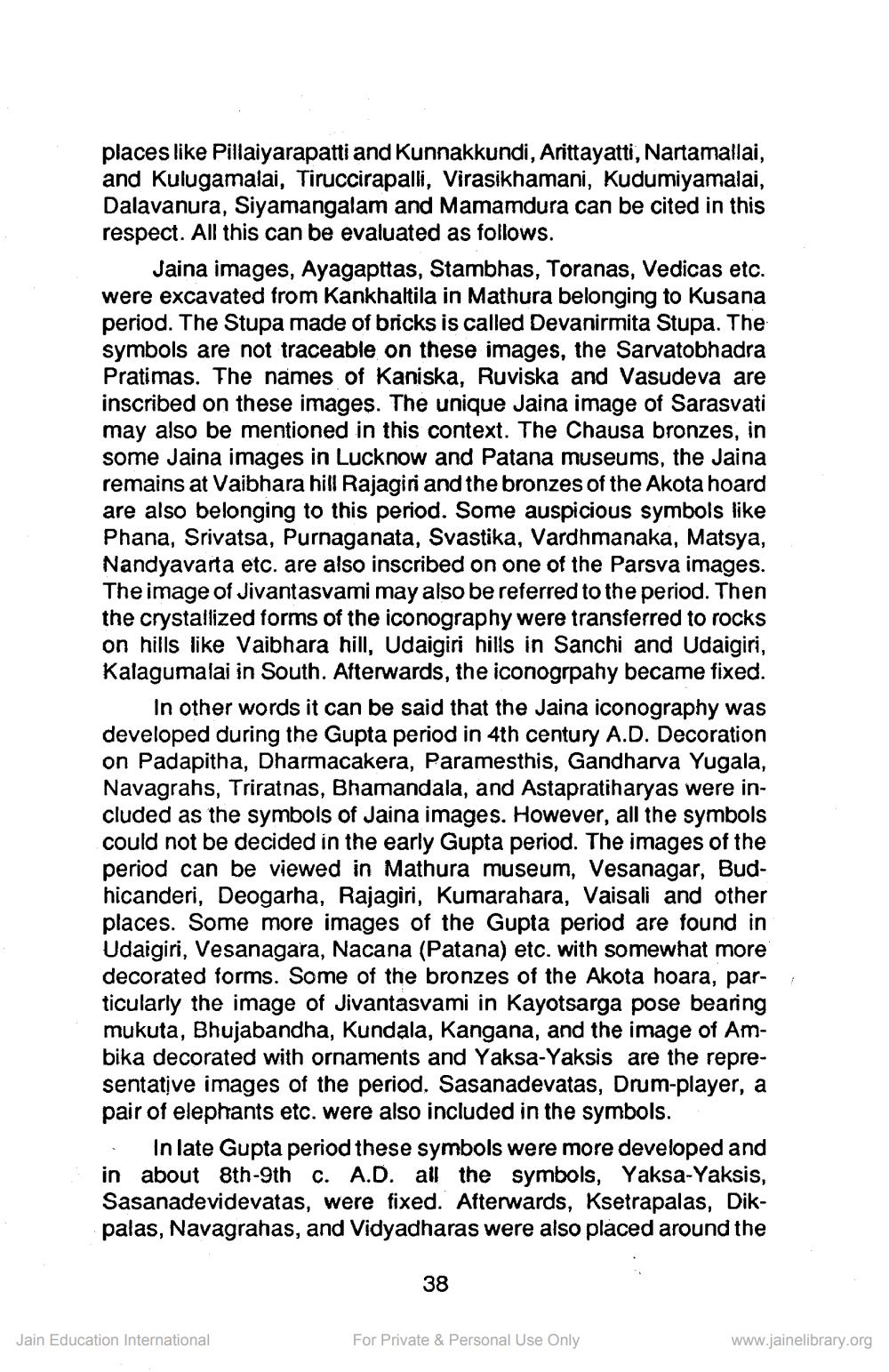________________
places like Pillaiyarapatti and Kunnakkundi, Arittayatti, Nartamallai, and Kulugamalai, Tiruccirapalli, Virasikhamani, Kudumiyamalai, Dalavanura, Siyamangalam and Mamamdura can be cited in this respect. All this can be evaluated as follows.
Jaina images, Ayagapttas, Stambhas, Toranas, Vedicas etc. were excavated from Kankhaltila in Mathura belonging to Kusana period. The Stupa made of bricks is called Devanirmita Stupa. The symbols are not traceable on these images, the Sarvatobhadra Pratimas. The names of Kaniska, Ruviska and Vasudeva are inscribed on these images. The unique Jaina image of Sarasv may also be mentioned in this context. The Chausa bronzes, in some Jaina images in Lucknow and Patana museums, the Jaina remains at Vaibhara hill Rajagiri and the bronzes of the Akota hoard are also belonging to this period. Some auspicious symbols like Phana, Srivatsa, Purnaganata, Svastika, Vardhmanaka, Matsya, Nandyavarta etc. are also inscribed on one of the Parsva images. The image of Jivantasvami may also be referred to the period. Then the crystallized forms of the iconography were transferred to rocks on hills like Vaibhara hill, Udaigiri hills in Sanchi and Udaigiri, Kalagumalai in South. Afterwards, the iconogrpahy became fixed.
In other words it can be said that the Jaina iconography was developed during the Gupta period in 4th century A.D. Decoration on Padapitha, Dharmacakera, Paramesthis, Gandharva Yugala, Navagrahs, Triratnas, Bhamandala, and Astapratiharyas were in cluded as the symbols of Jaina images. However, all the symbols could not be decided in the early Gupta period. The images of the period can be viewed in Mathura museum, Vesanagar, Budhicanderi, Deogarha, Rajagiri, Kumarahara, Vaisali and other places. Some more images of the Gupta period are found in Udaigiri, Vesanagara, Nacana (Patana) etc. with somewhat more decorated forms. Some of the bronzes of the Akota hoara, particularly the image of Jivantasvami in Kayotsarga pose bearing mukuta, Bhujabandha, Kundala, Kangana, and the image of Ambika decorated with ornaments and Yaksa-Yaksis are the representative images of the period. Sasanadevatas, Drum-player, a pair of elephants etc. were also included in the symbols. . In late Gupta period these symbols were more developed and in about 8th-9th c. A.D. all the symbols, Yaksa-Yaksis, Sasanadevidevatas, were fixed. Afterwards, Ksetrapalas, Dikpalas, Navagrahas, and Vidyadharas were also placed around the
38
Jain Education International
For Private & Personal Use Only
www.jainelibrary.org




